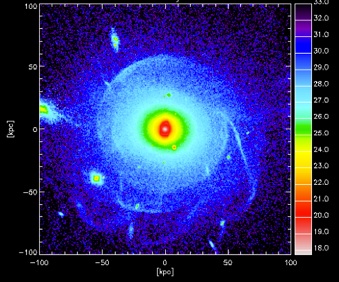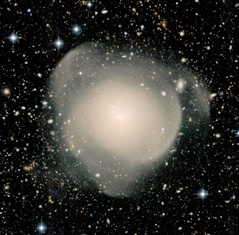
Shells
Shells are formed during galaxy collisions whenever specific conditions are met: orbital parameters, mass ratio between the parent galaxies. Whereas their formation mechanism are well explained and simulated, the precise ingredients required to form shells are still debated. They are best formed for intermediate mass mergers.
Optical shells in a nutshell
-
• Shape: narrow, sharp-edged, arcs
-
• Surface brightness: fainter than 23 mag.arcsec-2
-
• Number: usually multiple, forming series of concentric arcs
-
• Color: reddish (no star-formation)
Example of shell candidate within the MATLAS survey
What shells tell about the mass assembly of galaxies?
Shells may be formed in major mergers, but typically result from intermediate mass mergers (1:10). They emanate from the least-massive companion. Being sharp-edged, they are robust fine structures and long-lived, up to 4 Gyr. However, given their geometry, their identification strongly depends on the orientation: only one might disclose them.
Number of shells in a simulated galaxy facing several merger, with different mass ratios (Michel-Dansac et al., 2013)
Multiple shells around a host at a specific snapshot of a simulation modeling the mass assembly of a galaxy in a cosmological context (© Martig et al)


